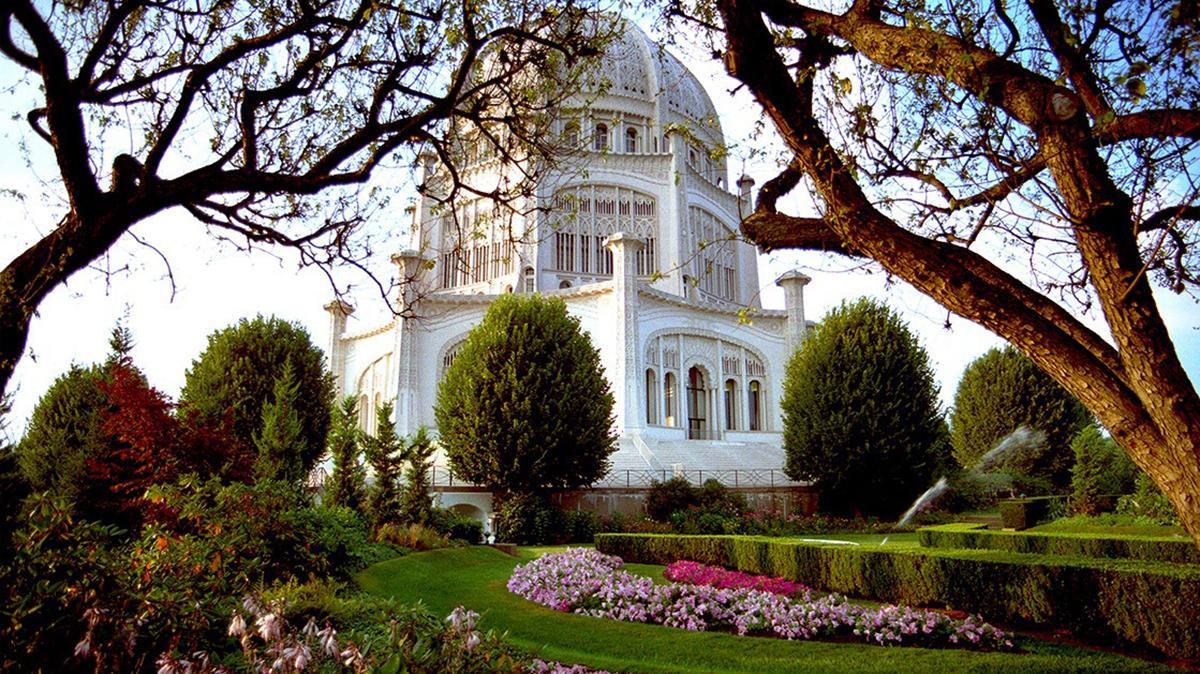
People of the Baha’i faith celebrated Naw-Ruz earlier this week. We hope you enjoy this repost discussing Baha’i spring observations:
Probably many people know that Easter and Passover occur in the spring, but spring is also a time of sacred observation for people of the Baha’i Faith.
March 20- 21 are the Baha’i Holy Days of Naw-Ruz, the Baha’i New Year. Naw-Ruz
coincides with the spring equinox and is an ancient Persian festival celebrating the “new day.” For Baha’is it marks the end of the annual nineteen-day fast and is one of the nine holy days of the year when work is suspended, and children are exempted from attending school.
Also in the spring is the Festival of Ridvan. This annual Baha’i festival commemorates the twelve days when Baha’u’llah, the founder of the Baha’i Faith, publicly proclaimed His mission as God’s messenger for this age. Elections for local, national, and international Baha’i institutions are generally held during the Festival of Ridvan. The first day (April 20 or 21), the ninth day (April 28 or 28), and the twelfth day (May 1 or 2) are celebrated as holy days when work is suspended, and children are exempted from attending school.
To learn more about the Baha’i Faith, please visit: www.bahai.org
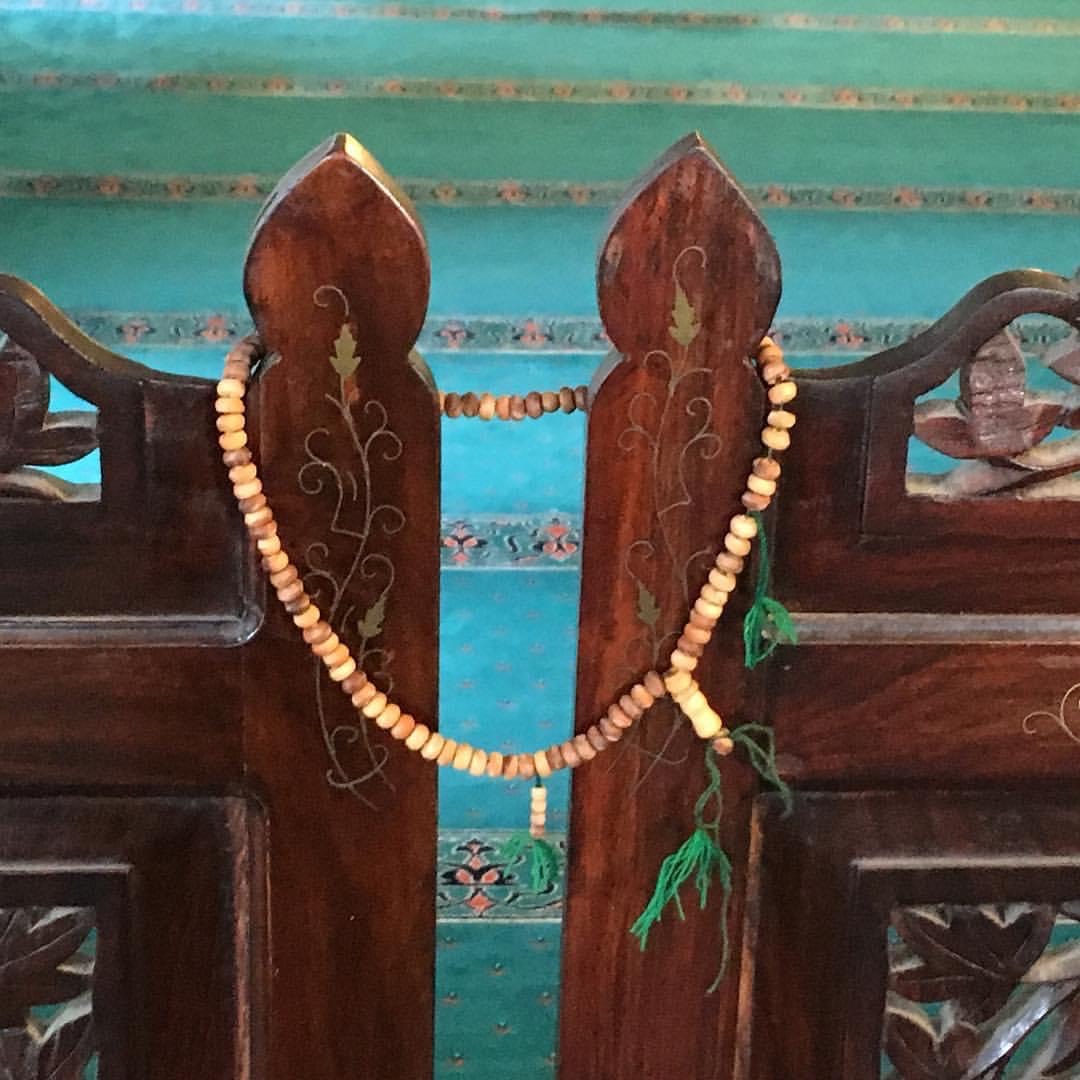
The holy month of Ramadan is expected to begin on Wednesday, March 22 at sunset.
To our brothers and sisters in the Muslim community, we say Ramadan Mubarak.
In honor of this special time, we are pleased to share with you this poem, written by Yerusalem Work of the Dar Al Hijrah Islamic Center:
Ramadan Rumination
Awakened
in an atmosphere of fear, hope, and love,
I seek refuge in a profound truth that
Allah pardons and protects those in need of
mercy and compassion,
kindness and the process of peace.
Humanity aligns with You when prostrate
on a prayer rug with niyah
and facing the qibla.
A perfect rain descends
and our hearts You mend.
May our prayers rise above
the fitnah of this world until
unity is a living dream
that we see as reality
and belief strengthens us
on a path He knows is best
that leads to Paradise –
nothing less.
May our worship be reserved for the One
who bleeds no blood,
but Whose words we hold in our hands
and recite according to His plan.
We thank You for the glorious Qur’an.
This blog post is the expressed opinion of its writer and does not necessarily reflect the views of Tysons Interfaith or its members. Photo credit to Yerusalem Work.
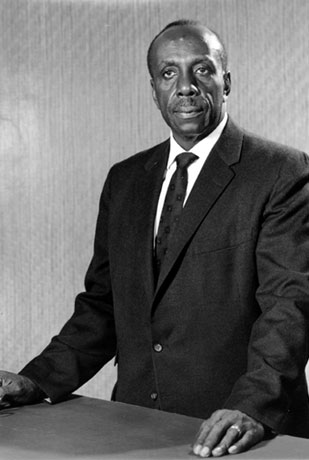
In recognition of Black History Month, I commend to you this prayer by Howard Thurman:
Lord, Lord, Open Unto Me
Open unto me, light for my darkness
Open unto me, courage for my fear
Open unto me, hope for my despair
Open unto me, peace for my turmoil
Open unto me, joy for my sorrow
Open unto me, strength for my weakness
Open unto me, wisdom for my confusion
Open unto me, forgiveness for my sins
Open unto me, tenderness for my toughness
Open unto me, love for my hates
Open unto me, Thy Self for myself
Lord, Lord, open unto me!
Thurman was born in 1899 and raised in the segregated South. He is recognized as one of the great spiritual leaders of the 20th century renowned for his reflections on humanity and our relationship with God. Thurman was a prolific author (writing at least 20 books); perhaps the most famous is Jesus and the Disinherited (1949), which deeply influenced Martin Luther King, Jr. and other leaders of the Civil Rights Movement. Thurman was the first black person to be a tenured Dean at a PWI (Boston U). He also cofounded the first interracially pastored, intercultural church in the US.
Source: https://www.xavier.edu/jesuitresource/online-resources/prayer-index/prayers-for-black-history-month1
This blog post is the expressed opinion of its writer and does not necessarily reflect the views of Tysons Interfaith or its members.
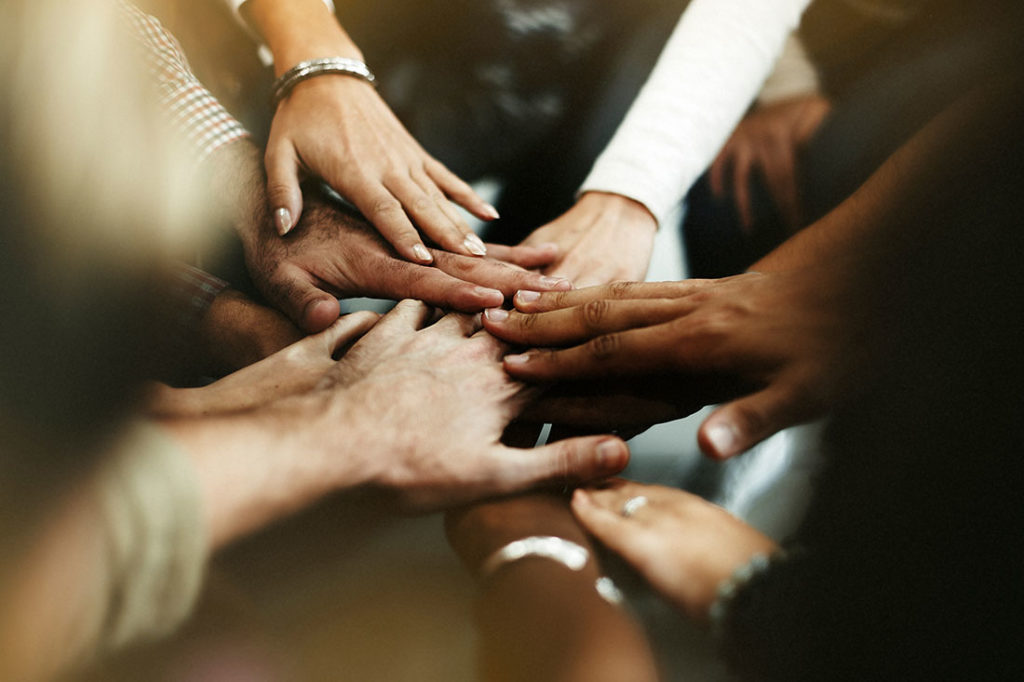
On Sunday, February 5, Tysons Interfaith will host a workshop entitled, “Reconnecting Post Pandemic.” We invite you to join us on Zoom for this event. (Details can found here.)
In the spirit of this event, we share with you these observations from Trish Hall of the Centers for Spiritual Living Metro.
It dawned on me recently that what I have been experiencing in the aftermath of the pandemic, was described in a story by Washington Irving. A few years ago, my life seemed to have some order to it. The pandemic hit. I felt like the letter-cubes being shaken in a Boggle cup. I accepted the role of the letters and made sense of my life within the confines of pandemic rules. Then the rules changed again. Like Rip Van Winkle, an amiable farmer who wandered into the Catskill Mountains where he came upon a group of dwarfs playing ninepins, I found myself in a different world among many unrecognizable people behaving in ways that were foreign to me. Rip accepted their offer of a drink of liquor and promptly fell asleep. I watched horrific scenes and appalling statistics on television, listened attentively to learn about medicines and sequestered. He awakened, 20 years later, as an old man with a long white beard; the dwarfs were nowhere in sight. Rip wandered into town and found everything was different.
I didn’t grow a long white beard. My slumber was only 2-3 years, but my disorientation was on par. Information (and misinformation) was coming from all directions. Schools and scheduling changed. Workplaces had been transformed. We learned, on a daily basis, which people, companies and organizations had survived. Everyone, in some way, had been impacted.
For many, re-socialization has been a struggle. Some adjusted to isolation so well that reconnecting with the world in-person was, and still is, scary. Navigating the new rules, or lack thereof, caused a sense of instability. Wobbling, tumbling, scrambling for a known that no longer exists, stressed many relationships to the breaking point.
Yet, deep within the disorientation, there is a vital energy calling us to emerge out of the cave of illusion into the light. We are being called to embrace the divine creativity within us.
Just as the phoenix rose from the ashes, we have the opportunity to discard behaviors and beliefs that do not serve us. Whether they ever did is irrelevant. Now freed from our tethers, we can overcome obstacles, achieve goals previously thought to be unattainable and create a world that works.
Now is the time to come together to cause a paradigm shift in the course of history. We need not be concerned that there may seem to be only a few who understand that this is our time to make a difference. Margaret Wheatley advised, “Never doubt that a small group of thoughtful, committed, citizens can change the world. Indeed, it is the only thing that ever has.”
This is a time of new beginnings. Everything we thought we knew has been impacted in some way – some cataclysmically, some minorly – none have escaped completely. Not in my lifetime, have I experienced a potentially clean slate on which to design a new world. Multitudes are still clinging to pieces of the past, terrified of the unknown, grasping onto tendrils of the past, impeding the emergence of a new way of being. Some have surrendered and given up, heading back into the cave to be re-shackled to the wall. Others have surrendered in a different way: they have released their attachment to trying to reinstate the past and are enthusiastically awakening to possibility … to calling forth pure creative potential. These are a new breed of investors – willing to invest heart and soul in creating a world that works. These are the ones that see the opportunities that abound – opportunities to be the facilitators birthing a world that works.
Imagine with me, a world in which all persons live in alignment with their highest spiritual principle, understanding the interconnectedness of all creation – in which there is an awakening to its spiritual magnificence. There would be no atrocities perpetrated. Kindness, and respect of each other as divine emanations would be the norm. Resources are valued, grown, cared for, and shared so that everyone has enough so that terms such as homelessness and food instability would only be words in the dictionary from times gone by. Everyone belongs in our new world.
Imagine a world which draws on spiritual wisdom and the lessons of experience -in which people respect and honor the interconnectedness of all life. This is our time for awakening heart based social conscience in every area of the political, corporate, academic, and social sectors, building sustainable structures to foster the emergence of global consciousness – a global ethic – a world in which the kinship all life prospers.
Imagine everyone discovering the creative power of thought and using it for the betterment of all people: a world that works on the individual and global levels. Feel the world becoming peaceful, when, as Jimi Hendrix said, “…the power of love overcomes the love of power …”
I love the imagery of creativity, on the brink of chaos, thriving. We have experienced more than enough chaos – now is our chance to midwife the birth of a new world – a world of peace, prosperity, compassion and caring across the planet and in each household.
Imagine with me, people everywhere emphasizing unity with their creator and connection with each other – individually and collectively responding to the call of Spirit to take action. An awakened “world that works for everyone and for all of creation,” is emerging as each of us does our part.
Listen deeply and respond! How are you to be? What is yours to do? What cause is spirit calling you to set in motion?
This blog post is the expressed opinion of its writer and does not necessarily reflect the views of Tysons Interfaith or its members.
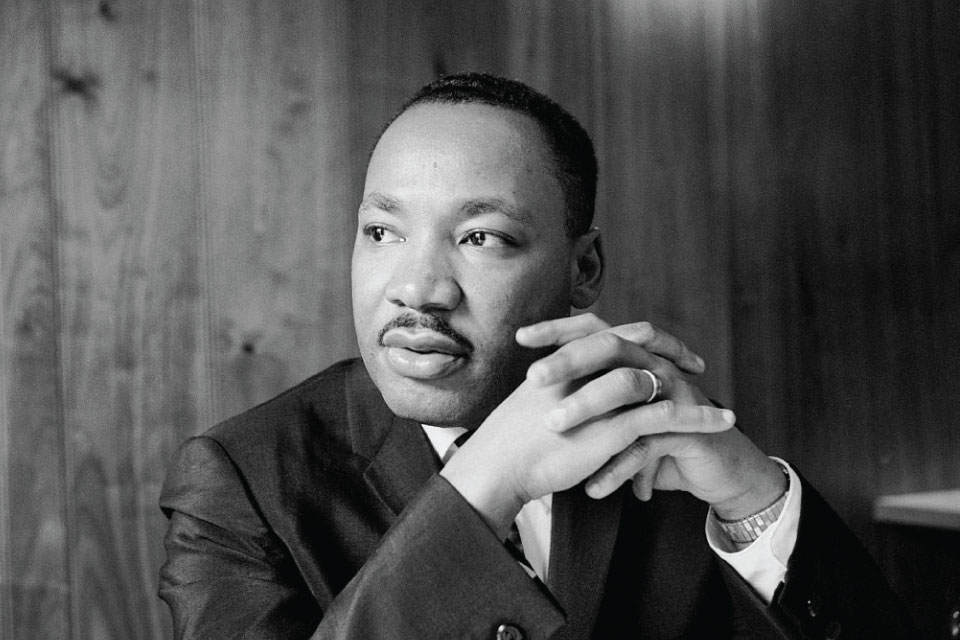
At a recent Tysons Interfaith meeting, my friend Reverend Trish Hall opened the gathering by reading an excerpt from the Martin Luther King Jr.’s 1967 address to the Southern Christian Leadership Conference entitled, “Where Do We Go From Here.”
You know words are timeless when they strike a chord and send a chill down your spine. Trish read the opening passage of this excerpt to us:
“I’m concerned about a better World. I’m concerned about justice; I’m concerned about brotherhood and sisterhood; I’m concerned about truth. And when one is concerned about that, he can never advocate violence. For through violence you may murder a murderer, but you can’t murder murder. Through violence you may murder a liar, but you can’t establish truth. Through violence you may murder a hater, but you can’t murder hate through violence. Darkness cannot put out darkness; only light can do that.
And I say to you, I have also decided to stick with love, for I know that love is ultimately the only answer to humankind’s problems. And I’m going to talk about it everywhere I go. I know it isn’t popular to talk about it in some circles today. And I’m not talking about emotional bosh when I talk about love; I’m talking about a strong, demanding love. For I have seen too much hate. […] and I say to myself that hate is too great a burden to bear. I have decided to love. If you are seeking the highest good, I think you can find it through love. And the beautiful thing is that we aren’t moving wrong when we do it, because John was right, God is love. He who hates does not know God, but he who loves has the key that unlocks the door to the meaning of ultimate reality.
And so I say to you today, my friends, that you may be able to speak with the tongues of men and angels; you may have the eloquence of articulate speech; but if you have not love, it means nothing. Yes, you may have the gift of prophecy; you may have the gift of scientific prediction and understand the behavior of molecules; you may break into the storehouse of nature and bring forth many new insights; yes, you may ascend to the heights of academic achievement so that you have all knowledge; and you may boast of your great institutions of learning and the boundless extent of your degrees; but if you have not love, all of these mean absolutely nothing. You may even give your goods to feed the poor; you may bestow great gifts to charity; and you may tower high in philanthropy; but if you have not love, your charity means nothing. You may even give your body to be burned and die the death of a martyr, and your spilt blood may be a symbol of honor for generations yet unborn, and thousands may praise you as one of history’s greatest heroes; but if you have not love, your blood was spilt in vain.
What I’m trying to get you to see this morning is that a man may be self-centered in his self-denial and self-righteous in his self-sacrifice. His generosity may feed his ego, and his piety may feed his pride. So without love, benevolence becomes egotism, and martyrdom becomes spiritual pride.“
Martin Luther King Jr. Day (Monday, January 16) is a nationally designated day of service. Whether you participate in an organized event, reach out a helping hand to a friend or neighbor, or offer an unexpected uplifting smile to another person, thank you for deciding to stick with love.
Looking for additional ways to observe the holiday? Reverend Trish Hall will be a contributor at the Unitarian Universalists Church of Arlington’s MLK 2023 Weekend of Remembrance.
This blog post is the expressed opinion of its writer and does not necessarily reflect the views of Tysons Interfaith or its members.
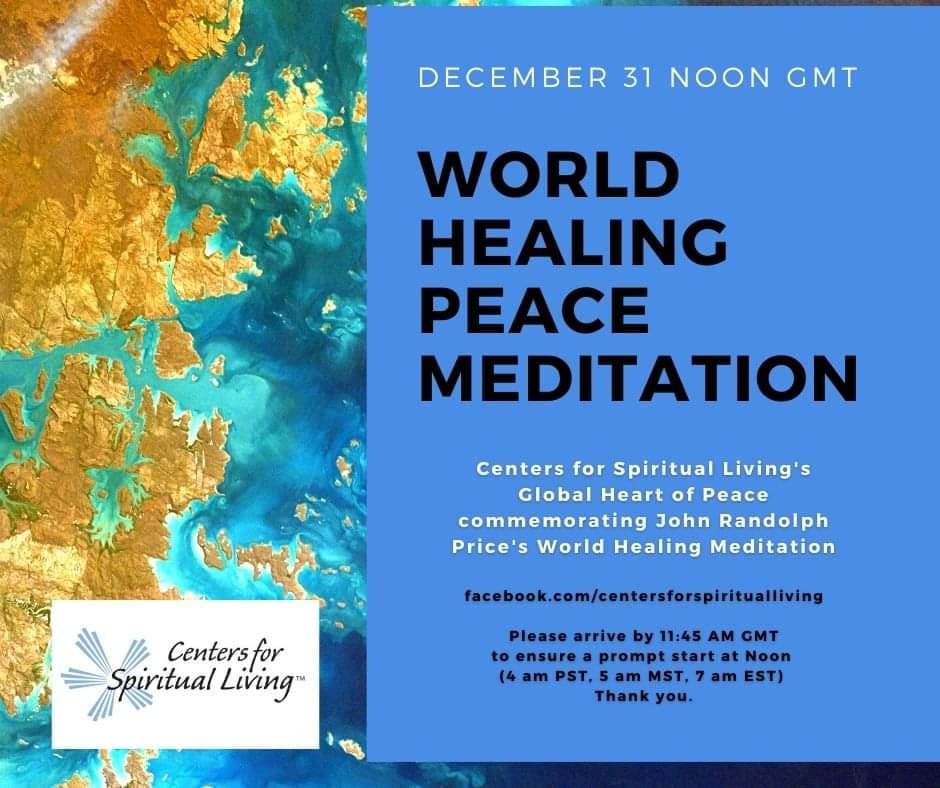
We are imbued with the ability to use the most powerful healing force in the universe: Love. It cannot be destroyed. It can be ignored. By denying its power, we cause ourselves and others pain. Embracing it is the only answer. Through the power of love, we can release ourselves from history’s entanglements and begin again. Love heals and makes whole.
Embarking on this transformative journey of shifting from individual moments of peace to continuities of peace, we must release attachment to how it’s always been, how we want it to appear, and ready ourselves so that Divine Possibility can have its way with us. An ancient Zen story provides guidance. It tells about a university professor who went to visit a famous Zen master. While the master quietly served tea, the professor talked about Zen. The master poured the visitor’s cup to the brim, and then kept pouring. The professor watched the overflowing cup until he could no longer restrain himself. “It’s full! No more will go in!” the professor blurted. “This is you,” the master replied, “How can I show you Zen unless you first empty your cup.” We must empty ourselves so that we are available to new learning and new experiences.
We are always at choice: the choice of how we are to be in each and every situation, the choice to be a conscious activity of God, the choice to apply spiritual principles to every circumstance, the choice to remember that the Truth that we know within must express into and as form, as circumstance, the choice to simply perpetuate our mistakes or learn from them and manifest our global vision of a world that works for all.
The Heart of Peace Initiative invites you to be a catalyst for global healing and sustainable peace, transforming moments of peace to continuities. You are encouraged to experiment with being a conscious presence as peace in a variety of settings and being kind and respectful when circumstances might lure you to be otherwise. We welcome you to meditate with us weekly on Facebook for Collective Peace Meditation at 1:00 PM (US Mountain Time) and for our array of other peace practices throughout the year.
Start 2023 by attending the World Healing Peace Meditation at 12:00 PM GMT December 31, 2022 (7am Eastern) on Center for Spiritual Living, Heart of Peace, Facebook Live. https://www.facebook.com/centersforspiritualliving/.
This blog post is the expressed opinion of its writer and does not necessarily reflect the views of Tysons Interfaith or its members.

By: Reverend Trish Hall, Centers for Spiritual Living Metro
It serves no purpose to deny what is happening globally and locally. Unless we acknowledge that there is a problem, we are powerless to make changes. How do we walk the tightrope of being fully engaged, committed to transforming the problem, yet not lose ourselves in the problem so that we become a force of separation? The passion that ignites our desire to manifest a world that works for everyone, can all too easily become divisive rather than unifying. Spirit stirs us to recognize that which needs to change, to seek solutions, to be impassioned to cause change, and to do so in ways that unite rather than separate us.
We receive conflicting messages: we must “feel it to heal it,” yet warned, “That which you focus upon expands in your experience.” Recognizing what needs to be changed demands that we look objectively at ourselves and circumstances. Simultaneously, we must feel it and sense it deeply, in order to muster the energy to be a cause for change yet not get so consumed by it that we lose perspective and become ineffective. We must place our focus on healing – to call forth the Divine Truth that shifts human experience at the level of cause. Divine Truth does not deny circumstances. It provides the means to effect lasting change of circumstances. It diminishes the human propensity to get distracted and waste energy on behaviors that widen rifts and entrench the sense of separation. It calls us to be healers – unifiers that dissolve the sense of separation.
So what is “healing”? The simple answer is to make whole. We must reunite our divided nature, releasing our fixation on what is wrong with the world and opening to pure potentiality – to accepting responsibility for doing our part to heal ourselves and the world. Sometimes in the midst of chaos, it is hard to see “Truth beyond appearances.” Sometimes, it is hard to remember when surrounded by alligators, that we are there to drain the swamp – to remember it is the Truth that sets us free from the alligators.
Ernest Holmes declared, “We have within us, a power that is greater than anything we shall ever contact in the outer, a power that can overcome every obstacle in our life and set us safe, satisfied and at peace, healed and prosperous, in a new light, and in a new life.” Simply because we have it is no assurance that we use it for good purpose – that is a matter of choice. How then do we choose to be? Do we use this power peacefully, as compassion, healing of strife and global chaos or do we remain imprisoned by beliefs that global peace is not possible because it has not yet been experienced? Do we take responsibility for our past mistakes, learn from them, and redirect our thoughts and actions? Do we uproot our misplaced faith in the inevitability of that which is not desired, or do we embrace the power within and be catalysts for change – catalysts for peace?
It is time to subdue all inner conflict by giving no further attention to the many distractions – the side issues that divert us from the fulfillment of our goal. We achieve this by engaging all our thoughts and feelings in constructive, creative, and productive consciousness – by being peace.
Please consider joining us or the annual World Healing Meditation that commences precisely at 12:00 AM GMT (7:00 AM Eastern) on December 31st. You can do this individually, or in-person groups or join the Heart of Peace Initiative which provides an hour of inspiration including affirmations, meditation and readings focused on the realization of global peace, healing all aspects of the world, revealing peace at: facebook.com/events/716551799681145

Nelson Mandela: “Peace is not just the absence of conflict; peace is the creation of an environment where all can flourish regardless of race, color, creed, religion, gender, class, caste or any other social markers of difference.”
Deep within their beings, John Randolph Price and his wife, Jan, understood true Peace. They envisioned millions of people around the planet joining together in a “global mind-link” to heal the world and reveal peace, so they launched the World Healing Day, December 31, 1986. Their concept was clear – a moment in time in which the consciousness of millions would be linked in a single focus: A worldwide, congruent embodiment of healing and harmonizing Planet Earth. The power of such clarity in any moment is unstoppable. Recognizing the challenge of sustainability, they established it as an annual event strategically placed right before the start of each year. This year is the 37th annual gathering. It has grown consistently. Most people, once they have participated, feel the call to do it again and again.
The Heart of Peace Initiative of Centers for Spiritual Living Global Services took up the challenge to engage a mind-link, as the Prices had envisioned, to transmute moments of Peace into continuities. The Initiative’s vision sees millions of people diving into the consciousness of peace, healing, and harmony at random times as well as specific events, spontaneously reconnecting with the mind-link. The Prices believed, and we agree, that the sense of connection is a powerful factor in peace building.
There is a traditional African concept of humaneness, for caring, sharing and being in harmony with all of creation. In In Zulu or Xhosa, the term is “ubuntu.” A friend told me, “The concept is easy: I am because we are.” Peace arises when we connect with and care for one another. Whether we call it Amani (Swahili) or Ukuthula (Zulu) or Peace, we are intuitively drawn to it.
Alas, we humans tend to get distracted by the swirl of worldly circumstances. Often distractions trigger attitudes that are the antithesis of harmony. Yet, that innate desire within to connect stirs ever growing numbers of hearts to heal and allow peace to prevail. The undulating, rippling effect of this desire is contagious and lifts the consciousness within everyone, everywhere whether they are conscious of what is happening or not.
When we look around, the world – even our individual thoughts – seem rife with examples of discord, violence, and disasters. It can be overwhelming. The voice of doubt may raise its head, questioning, “What difference can I possibly make.” The answer is, “You make a world of difference! Every act of love, of kindness, of compassion ripples out touching and transforming others who consciously or otherwise do the same.” Just imagine the result if each one of us raised these simple acts to the level of commitment and took responsibility for the influence we have on others.
One of the things you can do is participate in the annual World Healing Meditation that commences precisely at 12:00 AM GMT (7:00 AM Eastern) on December 31st. You can do this individually, or in-person groups or join the Heart of Peace Initiative which provides an hour of inspiration including affirmations, meditation and readings focused on the realization of global peace, healing all aspects of the world, revealing peace at: facebook.com/events/716551799681145
This blog post is the expressed opinion of its writer and does not necessarily reflect the views of Tysons Interfaith or its members.
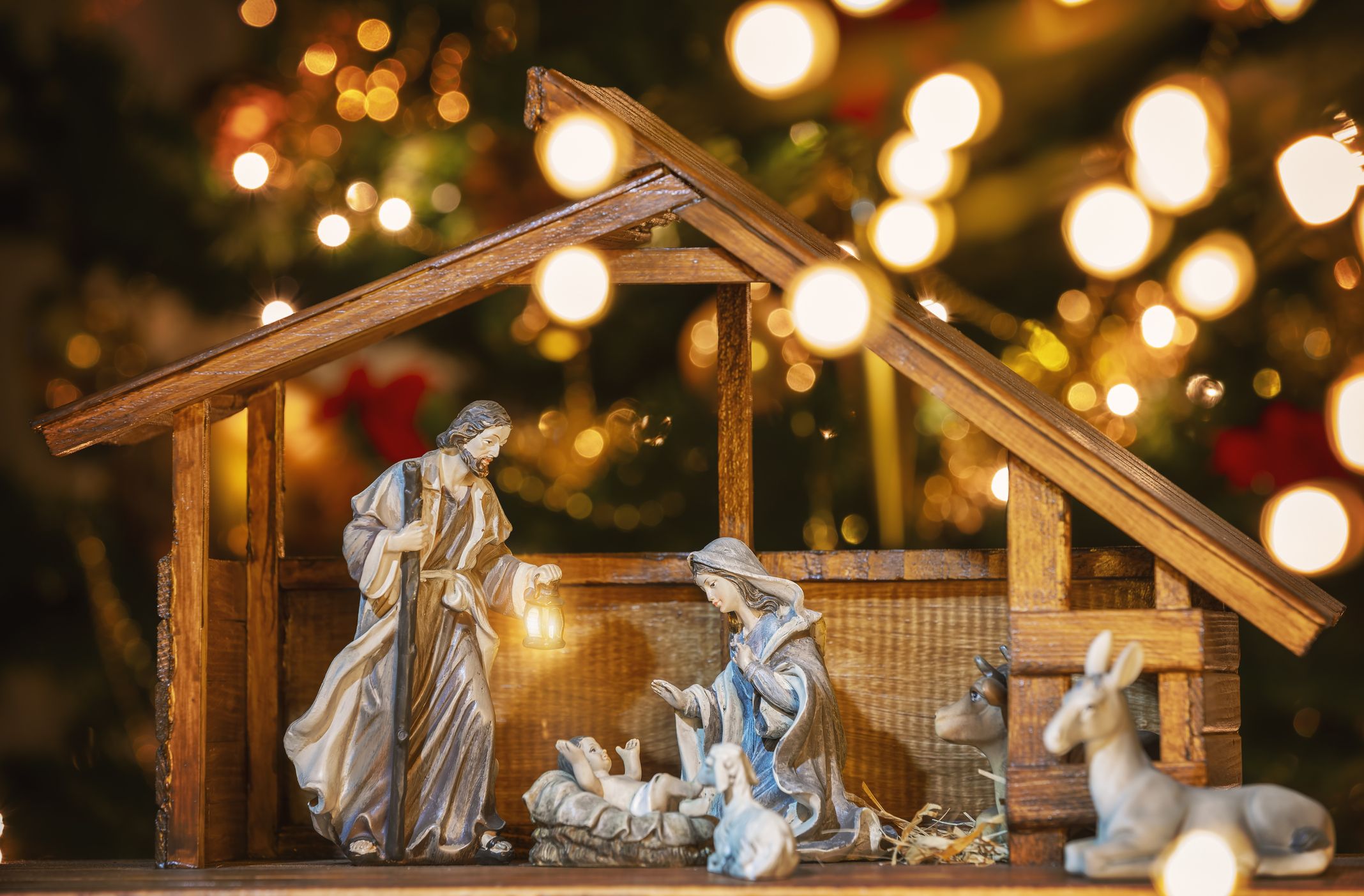
Those of us brought up in the Christian tradition (indeed probably most people) have heard the Christmas Story as told by the Gospel of Luke 1: 1-7:
In those days a decree went out from Emperor Augustus that all the world should be registered. This was the first registration and was taken while Quirinius was governor of Syria. All went to their own towns to be registered. Joseph also went from the town of Nazareth in Galilee to Judea, to the city of David called Bethlehem, because he was descended from the house and family of David. He went to be registered with Mary, to whom he was engaged and who was expecting a child. While they were there, the time came for her to deliver her child. And she gave birth to her firstborn son and wrapped him in bands of cloth, and laid him in a manger, because there was no place for them in the inn.
This Advent season (in the Christian tradition, the four weeks of preparation leading up to Christmas) I have kept hearing the theme, “making room.”
In the Scripture readings on December 18, we heard from the Gospel of Matthew the story of Joseph a “righteous man” who, when faced with the life shattering news that Mary his betrothed was with child, resolved to dismiss her quietly so that she would not be exposed to public disgrace, which would have been well within his right in the customs of day. Instead, “….just when he had resolved to do this, an angel of the Lord appeared to him in a dream and said, ‘Joseph, son of David, do not be afraid to take Mary as your wife, for the child conceived in her is from the Holy Spirit. She will bear a son, and you are to name him Jesus, for he will save his people from their sins.’” (Matthew 1: 19-21). Pastor Josh Wullenweber of Redeemer Lutheran, preaching on this text noted that Joseph made room in his life for faith – and acted on that faith by taking the huge step of remaining faithful to Mary and to the special child she carried. Full text here.
In an earlier Advent sermon, Pastor Josh also commented on the importance of making room in our daily lives for prayer and meditation:
Now it’s hard to explain, but there is something so powerful about letting ourselves just rest in the light of Christ. Our outward and inward features do not change – but when we stop and let all that Christ is pour over us – something most certainly changes. Our hearts, our attitudes, our demeanor are made new – they are restored. Full text here.
Finally, on December 20 on the d365 APP I use for daily reflection, commentator Amy Kim Kyremes-Parks had this to say:
“Because we’ve been given such abundant grace, there is plenty to share. Maybe you can encounter others this week with even an ounce of the kind of deep love God has for them. It could be a total stranger, someone you see all the time, or someone you would rather not encounter. You don’t need to talk … just make space for God’s love to give you a new perspective.”
As we Christians finish our Christmas preparations and anticipate with joy the coming of the Christ child, my wish for each of us, regardless of our faith tradition, or even for those still exploring a relationship with God, is that we try making space in our lives for God’s gracious, restorative, and loving presence.
This blog post is the expressed opinion of its writer and does not necessarily reflect the views of Tysons Interfaith or its members.
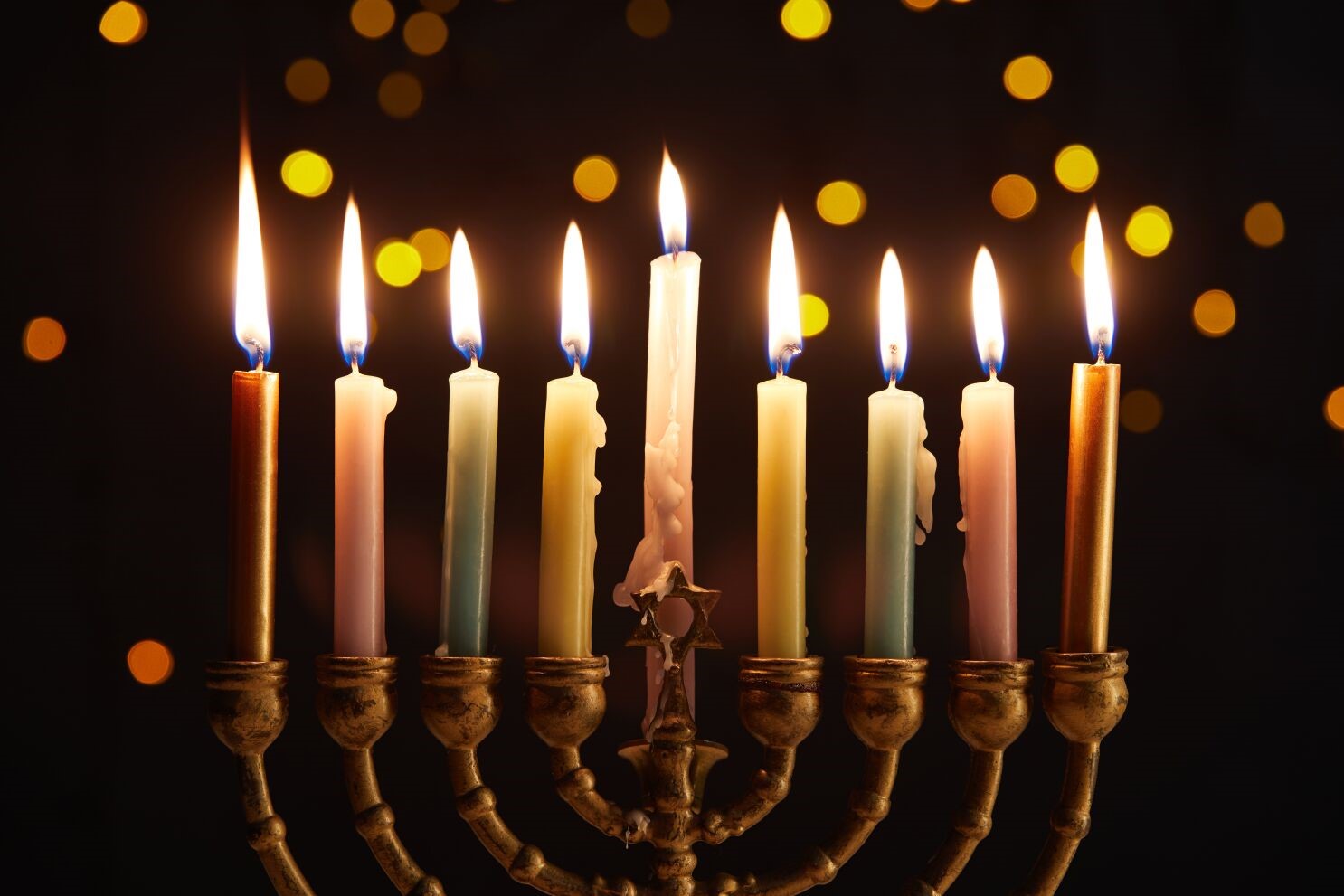
On Sunday, December 18 at sundown, Jews all over the world will begin the celebration of the eight-day festival of Chanukah with the lighting of the first candle on the menorah.
What is very important to remember in a time of watching the rise of antisemitism all over the world, with a 34% increase in incidents in the United States in 2021 over 2020 (last full year), is that this holiday celebrates the victory of religious freedom.
The holiday comes from the Book of Maccabees which did not make it to the Jewish Bible (Tanakh). The Book of Maccabees is one of the 14 books in the Apocrypha, from the Greek word meaning “hidden”. The Maccabean Revolt
( Hebrew: מרד החשמונאים) was a Jewish rebellion led by the Maccabees against the Seleucid Empire and against Hellenistic influence on Jewish life. The beginning of this fight began in 167 BCE.
To celebrate the victory, the Jews went to rededicate the temple in Jerusalem which had been taken over by the Seleucids and defiled. The anniversary of this rededication is how the date for the Chanukah celebration was determined. Chanukah is always on the 25th of the Hebrew month of Kislev, which is on a different calendar system than the one we use. This means that the actual date for the beginning of Chanukah on the Gregorian calendar changes every year and can begin as early as November 28th, or as late as December 25th, which will happen in 2024.
Another name for Chanukah is the Festival of Lights. The story is that when the temple was finally cleansed, they found only enough oil to last one night, but by a miracle, it lasted for eight, and that is the reason for eight days of Chanukah. The lighting of the menorah in public goes back to the beginning of the holiday itself. The sages instructed that the menorah be lit at the entrance to one’s home to publicize the miracle.
Let this festival of light shine light on religious freedom not just at this time of year, but at all times for all people.
This blog post is the expressed opinion of its writer and does not necessarily reflect the views of Tysons Interfaith or its members.
